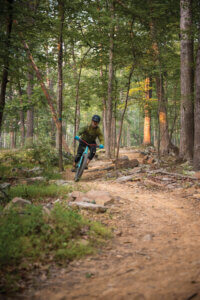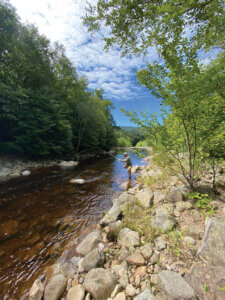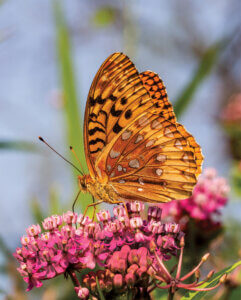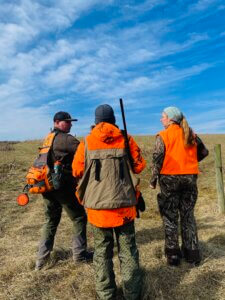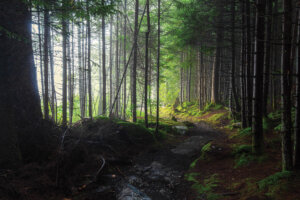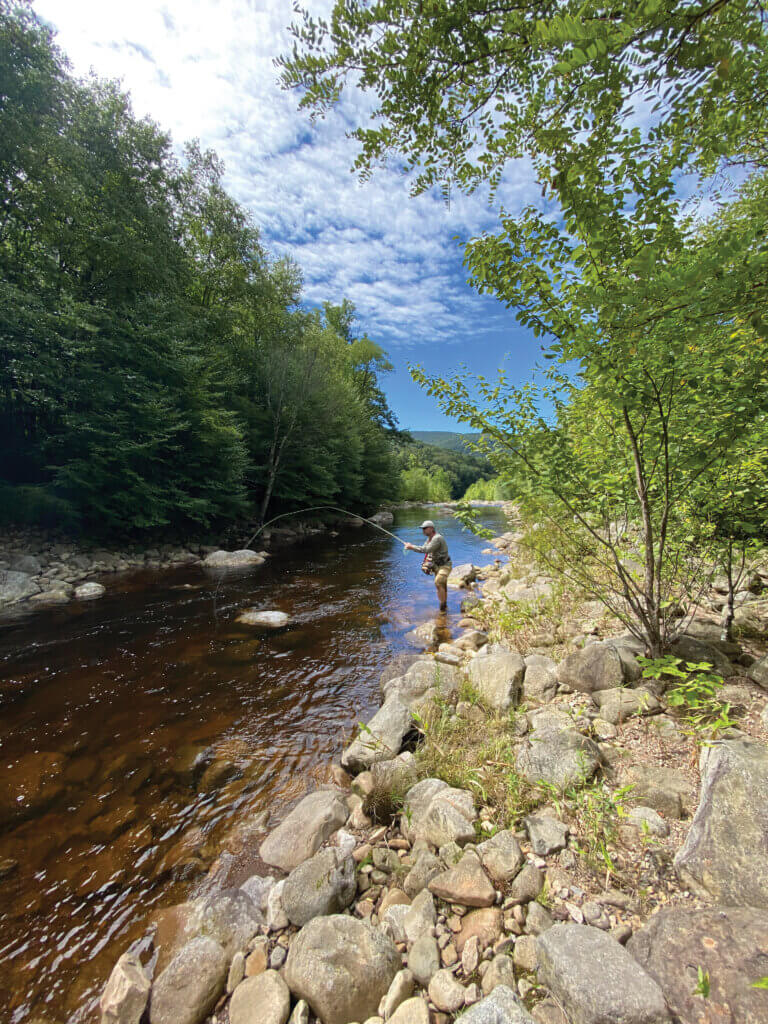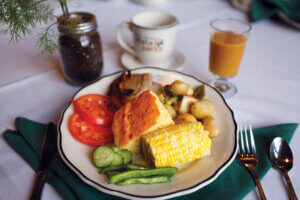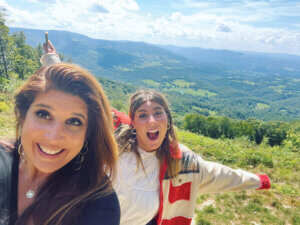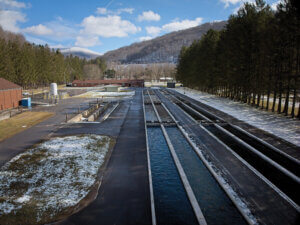
Unleashing West Virginia’s Hunting Hounds and Gun Dogs
This story was originally published in the September 2020 issue of Wonderful West Virginia, and was updated in October 2022 by Wonderful West Virginia staff. To subscribe, visit wonderfulwv.com
Written by Jordan Carter
Michael “Andy” Pastine began hunting with beagles in the early 1990s. From there, he says, it progressed like wildfire. As the sun breaks through the thick fog blanketing the Alleghenies, he packs up camp on Cheat Mountain. He stands in an inch and a half of snow on the ridge, and the January winds make the morning feel colder than its 18 degrees. He pays no mind; he’s thinking about one thing: snowshoe hares. His pack of beagles is, too. They whine and bounce as he loads them into their kennels on the back of his truck.
“They want to be out running,” Pastine says. “They want to be doing what they were bred to do.” Pastine turns the dogs loose in the Monongahela National Forest. They roam out about 400 yards, searching the brushy ground cover until one hits a hot scent. He begins to bark, and the beagles congregate around a dense thicket. They pressure the hare inside, crouched in its form, ears back. Pastine takes post and waits. The hare darts from the thicket and bounds white on white across the snow, the beagles close on its heels. Pastine aims for a clean shot and fires.

Running Rabbits
When Pastine isn’t hunting hares across the East Coast or at home on Cheat Mountain, he’s training his dogs on cottontail rabbits with fellow beagler Captain Woodrow Brogan. As a Division of Natural Resources law enforcement officer, Brogan has been protecting and managing wildlife for 27 years. Since 2000, he’s been hunting rabbits with the smallest of the hound breed—beagles.
Brogan comes from a lineage of houndsmen. He was 12 years old when he traded his neighbor a .22 rifle for his first rabbit beagle, Cooter. “I’ve been hooked ever since,” Brogan says. “I loved that gun, too, but I think I made a really good trade. I’ve gotten years of fun running rabbits with beagles.”
Running rabbits takes a particular breed of dog, one with stamina, athleticism, and the build to run the hills of West Virginia. Above all else, though, Brogan says a dog must have “hunt,” the desire to go deep into the briars and mountains because it knows what lives there.

On any given snowy morning during rabbit hunting season, Brogan is loading up his dogs, putting on his briar chaps, and heading into the woods. He hunts in Greenbrier County and along the brushy river bottom of the New River Gorge. There, it’s up to the beagles to figure out the rabbits’ riddle.
Brogan calls West Virginia the best-kept secret for dog hunters. “We’ve got all this open land you can turn a dog loose on.” And for Brogan, it’s all about the dogs. “If I wanted to, I could go out and stomp around by myself,” he says, “but I just love the companionship. If none of my buddies go with me, it’s still like I’m not alone.”
In It for the Hounds
Dean Moses has been hunting bear for the past 30 years. He hunts rabbits, too, with Captain Brogan, who refers to bear hunting as an “overgrown rabbit hunt.” The end game, though, is a little different.
It’s late in the kill season—Christmas week. Moses has been rigging since daylight. It’s just above freezing in the Monongahela National Forest, but he’s warm in his truck. His coonhounds are in their rigging boxes at the back and, together, they traverse the snow-covered roads looking for a track. Static comes across the two-way radio, and he hears dogs baying in the background. “Going into good country,” the hunter says.
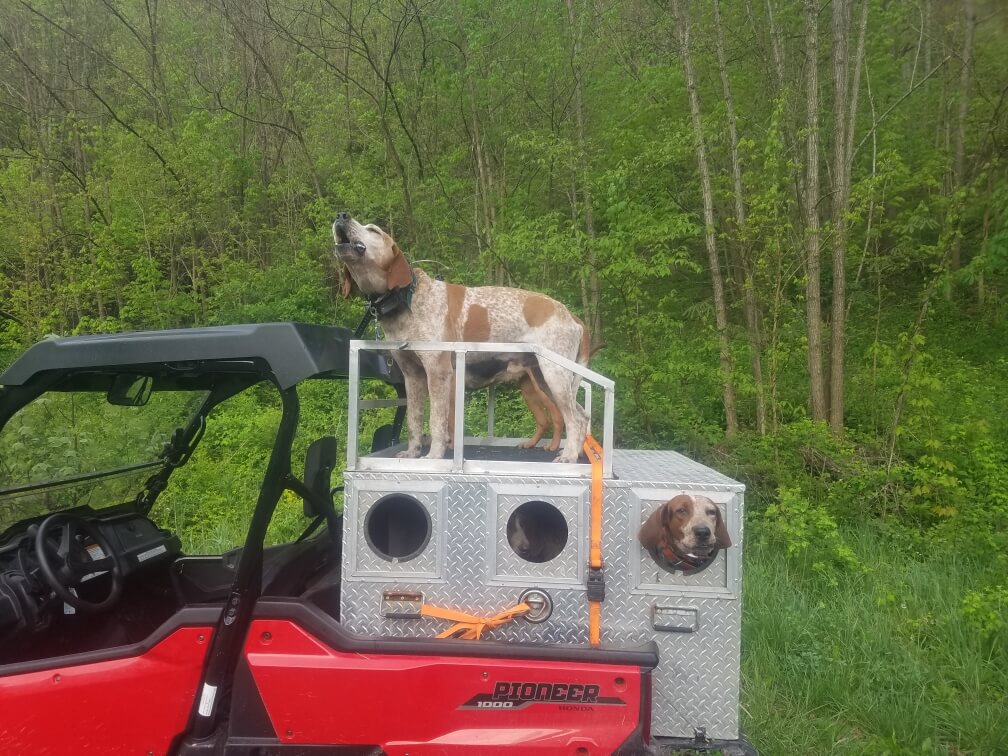
A small convoy of trucks meets the hunter at the head of a timber road, and they turn their dogs loose to follow the bear scent. It’s rough hunting, Moses says. The grade is steep and rocky, and the forest is thick with mountain laurel. “I love a good chase,” he says, “to stand on the top of the mountain and listen to my dogs run.”
A bear dog has to have a good nose and endurance. A single bear chase can last up to 10 hours and cover 30 miles. But heart, Moses says, is most important. “It’s in their blood to trail and run and tree,” he says.
The hunting party catches up to the coonhounds, which surround the base of a poplar tree. Thirty feet up in its snow-covered branches is a black bear. Moses helps the youngest member of the party, a boy about 10 years old with eyes as big as silver dollars, aim and fire. But for Moses, not every hunt has to end in a kill. Sometimes it ends with the tree, because every bear killed is a bear Moses’ dogs can’t run tomorrow.
Upland Shooting
LeJay Graffious, director of the Old Hemlock Foundation, grew up in Bedford County, Pennsylvania, with a family who hunted over hounds. He says the only time he’d ever seen an English setter as a child was in photos in National Geographic. That was until he visited the Carnegie Museum of Natural History in Pittsburgh and saw the display of Count Nobel, a Llewelling Setter, in the distinctive setter stance upon finding its quarry, the position colloquially referred to as “setting” on the bird. “I remember admiring the action in that display,” Graffious says.

In 1974, Graffious came face to face with a setter once again when he moved to Preston County and moved in next door to George Bird Evans and his wife, Kay. “I still remember the day they came to meet the neighbors,” Graffious says. “They had an orange Belton by the name of Briar. I remember seeing him trotting down the lane to our house. It’s an indelible memory in my mind.” Briar was one of Evans’ Old Hemlock setters.
Evans was born in Uniontown, Pennsylvania, in 1906 to an avid bird hunter father. He spent his formative years accompanying his father into the mountains of West Virginia, where they hunted ruffed grouse over English setters. In 1939, George and Kay purchased a historic farm near Bruceton Mills, where they would develop their Old Hemlock line of English setters.
Evans found his ideal dam, Dawn, in George Ryman’s English setters. Dawn had the beauty of a show dog and the hunting capability of a field trial dog. He chose Blue, another of Ryman’s setters, to sire the first litter of Old Hemlock puppies, born in 1947.
Upon Evans’ death in 1998, Graffious began bird hunting over Evans’ Old Hemlock Manton. In addition to their birdiness and perception, Old Hemlock setters were bred for companionship, and walking behind a dog added a deeper dimension to Graffious’ love of the outdoors.

In 2007, after Kay’s passing, Graffious became executor of the Old Hemlock estate and moved onto the property. “I had such respect for George and his dogs; I just felt I couldn’t live without having an Old Hemlock setter on the property.” He’s had Old Hemlock Black Willow, a blue Belton, ever since.
On a cool, damp day in mid-October, Willow seeks out bird scent at Dolly Sods. She ranges out no more than 50 yards, working the habitat until she winds a bird. She zigzags through the cover, nose in the air. Suddenly, she freezes and holds. It’s time for Graffious to close the deal.
Graffious’ hunts most often end in the flush because of the declining ruffed grouse and woodcock populations. The heavy timbering of the 1930s provided the early successional habitat in which these birds thrive. Today, we don’t see grouse and woodcock as Evans once did but, for Graffious, seeing a dog strike a solid point is thrill enough.
“Evans realized the grouse gave its life for his sport,” Graffious says. “He once wrote that, if he could take a grouse like he takes a trout on a fly and releases it, it would be the ultimate sport.”
Keeping a Lineage Alive

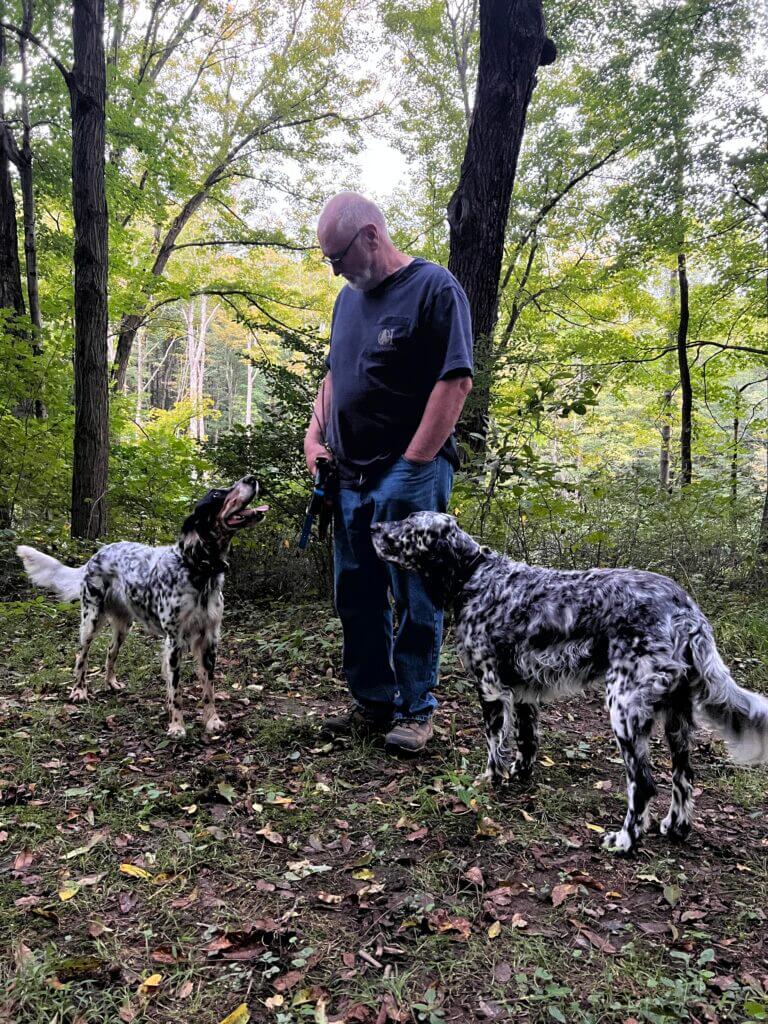
An experienced and veteran hunter should care least about his number of kills and more about being out in nature, working with his dogs and with the birds, according to Walter Lesser’s book, The Real Ryman Setter: A History with Stories from the Appalachian Grouse Cover. He started hunting the marshes, bays, and uplands of Long Island, New York, at the age of 10. Over the past 50 years, he says he’s “gained a considerable amount of pleasure and a way of life” from grouse hunting. He moved to West Virginia in 1956 and coordinated wildlife management activities for the DNR until 1999.
Be Worthy of Your Game
George Bird Evans
Lesser met George Bird Evans in 1958 and acquired one of his Old Hemlock pups, along with its dam, Ryman’s Blue Heather. When Ryman died in 1961, Lesser says his breed of setter died with him. “I realized that those few of us who had what was left of the old bloodlines better do our best to hang on to it,” Lesser says.
The hunters joined together to form a breeding program, thus developing the new Ryman-type setter. Lesser says they continued Ryman’s lineage in order to give the setters the opportunity they were bred for: to be gun dogs.
Hunting Ethics
Captain Brogan’s work crosses paths with his hobby when he must enforce hunting regulations. He says trespassing is the biggest issue the DNR faces when it comes to hunters, who must be aware of posted and private property and how far their dogs or quarry may range.
“If you encourage your dog to go on private property, you just violated the law in West
Virginia, even though you never set foot on that property,” Brogan says. The penalty for trespassing or hunting without permission ranges from $20 to $300 and/or 10 to 100 days in jail.
It is legal for West Virginia residents who have hunting licenses to train their dogs any time of the year on public land or on private property with the landowner’s written permission.

